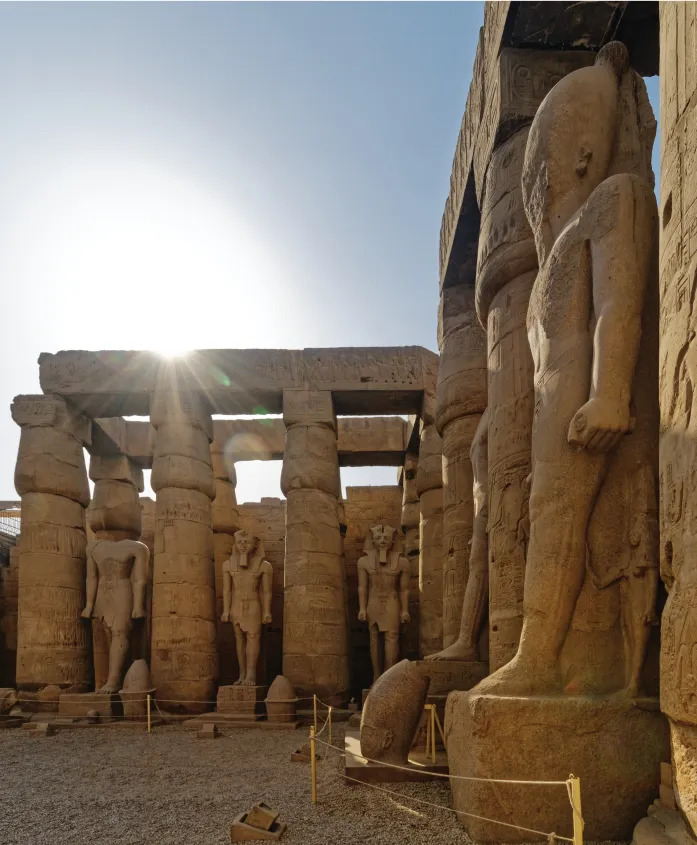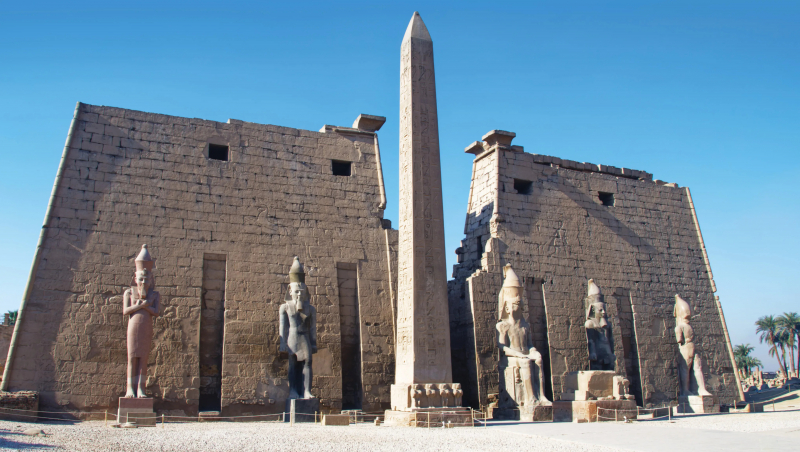Luxor Temple
Luxor Temple was the largest and most important religious historical institution in ancient Egypt, built over hundreds of years by Amenhotep III, Ramses II, Tutankhamun, and other pharaohs.
Luxor Temple was "the site of the First Occasion" in what was once Thebes, where the deity Amon experienced a rebirth during the pharaoh's yearly reenacted coronation rite. Today, the massive Great Colonnade Hall, over 61 meters long, with 28 twenty-one-foot-high columns, is the only remnant of this immense structure, its decorating was primarily accomplished by Tutankhamun around 1330 B.C. Many of the temple's sides were demolished following the pharaohs' reigns and repurposed for construction materials.
Prior to the 1960s excavation, the temple's sandstone fragments were in close contact with salt-laden groundwater, which leached into the stone. Exposure to fluctuations in humidity after excavation mobilized these salts and hastened degradation. The World Monuments Fund dedicated funding from the Robert W. Wilson Challenge to Conserve Our Heritage to the conservation of Luxor Temple between 2001 and 2007. Over 1,000 crumbling blocks and inscribed wall fragments were treated and consolidated, halting disintegration and allowing for early phases of rebuilding.
To mix in with the ancient stone of the temple, an outside piece of the eastern wall of the Colonnade Hall was reinforced with a brick buttress disguised by sandstone slabs. Another main set of 48 shards was put into the foot of that buttress where it joins the wall, completing the image of the holy barge and towboats of the hawk-headed moon-god Khonsu. A life-size statue of Ramesses II's principal wife, Queen Nefertari, was found, cleaned, and preserved. Missing parts of her legs were discovered, painstakingly restored to the statue, and likewise safeguarded.
Thousands of sandstone fragments recovered near Luxor Temple contain carved and painted details of hieroglyphic texts and temple ritual scenes; once identified, documented, and consolidated, many have been joined and reassembled into entire wall scenes as part of the Wilson Challenge Ancient Thebes Initiative. This challenging project also paid for Thutmosis III's portico addition to the Karnak Temple in 1400 B.C. and Amenhotep III's Mortuary Temple in the Theban Necropolis.
Location: Luxor.












